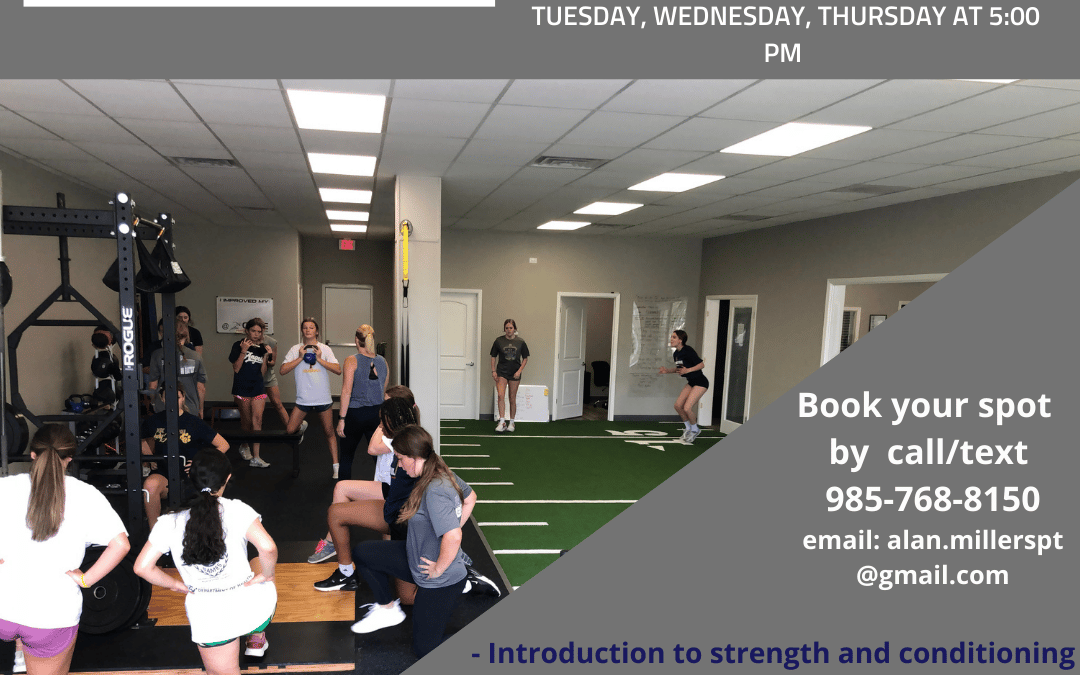We’ve all heard the phrase or variation of the phrases, “Weightlifting stunts growth” or “Weights are bad for kids.” This myth has been debunked for years, yet, there are still parents, coaches, and educators who are still highly misinformed. This myth likely came from studies done in the 70s and 80s that showed damage in the growth cartilage as a result of improper lifting and poorly written programming. (1) The injured athlete spends their time focusing on recovering and getting back to where they were while the healthy athlete can focus on getting improving and getting ahead.
There are several benefits to weightlifting and additionally, there are several aspects that make one resistance training program safer than others. Before getting ahead of ourselves, let’s review the benefits of weightlifting/strength training/resistance training.
Benefits include:
- Reduced injuries: youth athletes who regularly participated in weightlifting see a decrease in muscle strains, ligament sprains, and bone injuries. Anyone who follows Core Performance Academy (CPA) knows this is the top emphasis of all of our programs.
- Increased power: as a result of consistent resistance training a youth athlete can increase the speed in which the muscles contract and produce force.
- Increased strength: the nervous system can recruit more muscle fibers and therefor allowing more muscle fibers to play a role to produce a stronger movement.
- Stronger bones: loading the skeletal system cause a change of mineral content and is directly related to increased bone strength.
- Increased confidence: several studies have demonstrated improved self-esteem, they even showed when they stopped
What makes a training program safe?
- Education on proper lifting techniques: The coach should be educated and certifications come in many different forms. (This subtopic can be a blog in itself so I will keep it short.) There are certifications that require a college degree and others that do not. The certifications that do NOT require a sports performance coach / personal trainer to do continuing education are the ones that may fall behind with best practices and research. How about CPR and AED certified? Your coach or personal trainer should be knowledgeable on the resistance program they are teaching. It is easy to tell someone to do something, it is another to know the why and the benefit of each individual drill or exercise.
- Effective supervision: New lifters are going to make mistakes. It is important a coach is available to oversee the lift and potential places for technique improvement(s). Over here at CPA, we keep our classes limited to 12 participants. If we find there are more than 12 consistently attending, we bring in another coach to ensure proper supervision.
- Program design: This is really where the injury risk reduction and proper long term athletic development comes into play when executed properly (2). Program design is so much more than throwing together exercises- it is load management, knowing the risk factors that come with their sport, goal oriented, etc. It is easy to tell someone to do something, it is another to know why and the benefit of each individual drill or exercise.
The injured athlete spends their time focusing on recovery while the healthy athlete can maintain focus on continually improving. Don’t wait until you or your child sustains a non-contact injury (or any injury for that matter) before making health a priority, find a program that is right for you and invest in you or your child’s health. If you are interested in a facility that encapsulates these concepts, check us out. As shown above, resistance training for kids is not adherently negative or big risk. The environment tends to play a bigger risk factor especially when proper lifting education/demonstration, supervision, and program design are removed from the equation. Be healthy, be durable.
Alan Miller, ATC, LAT, CSCS
Owner of Core Performance Academy
Father and husband
References
- https://www.ncbi.nlm.nih.gov/pmc/articles/PMC5532191/
- https://www.ncbi.nlm.nih.gov/pmc/articles/PMC4861005/

